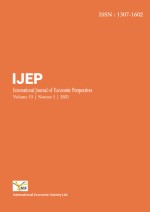The hidden drivers of organizational performance: A case study of NAFTAL GPL Tiaret
Keywords:
Motivation, organizational performance, material incentives, moral incentivesAbstract
This study aims to explore the impact of both material and moral incentives on the organizational performance of the company NAFTAL, located in the wilaya of Tiaret. Using a questionnaire consisting of 26 questions distributed to 40 employees, the collected data were analyzed using SPSS28 software. The results indicate that financial incentives, such as bonuses, significantly enhance productivity and collective outcomes. At the same time, moral incentives such as recognition, appreciation, and opportunities for personal development strengthen employee engagement and foster a sustainable performance dynamic. The study highlights a statistically significant relationship between incentives (both material and moral) and organizational performance, demonstrating that employee motivation is a critical strategic lever. It further emphasizes that an organization’s performance relies as much on effective human resource management as it does on technical or financial resources. In conclusion, the research confirms that a balanced approach combining financial rewards with moral recognition can significantly improve an organization’s overall performance.
References
Amabile, T. M., & Kramer, S. J. (2011). The Progress Principle: Using Small Wins to Ignite Joy, Engagement, and Creativity at Work. Harvard Business Review Press.
Amrani, S., & Mansour, N. (2020). L’impact de la motivation sur la performance organisationnelle : Cas de CEVITAL d’Alger. Mémoire de Master, Université Mouloud Mammeri.
Becker, B. E., & Huselid, M. A. (1998). High performance work systems and firm performance: A synthesis of research and managerial implications. Research in Personnel and Human Resources Management, 16, 53–101.
Boudraham, F., & Boudraham, M. (2022). L’impact de la motivation des ouvriers spécialisés sur la performance de l’entreprise : Cas de l’entreprise ALCOST SPA de Bejaïa. Mémoire de Master, Université Abderrahmane Mira – Bejaïa.
Deci, E. L., & Ryan, R. M. (2000). The "what" and "why" of goal pursuits: Human needs and the self-determination of behavior. Psychological Inquiry, 11(4), 227–268. https://doi.org/10.1207/S15327965PLI1104_01
DeVellis, R. F. (2016). Scale development: Theory and applications (4th ed.). Sage Publications.
Djadli, S., & Boufalta, M. S. E. (2019). Investigating the impact of motivation and employees’ commitment on organizational performance: Case study of two manufacturing companies in Constantine. Revue Le Chercheur Économique, 7(1), 89–108.
El Bettioui, R. (2024). Proposition d’un modèle conceptuel de gestion de la performance organisationnelle via la digitalisation et la gouvernance RH. Actes du Colloque DFIE. https://www.researchgate.net/publication/386907188
Ellah, M., & Yacine, R. (2017). L’impact du système de motivation sur la performance des ressources humaines : Cas du Complexe Textile Industriel de Draa-Ben-Khedda (Tizi-Ouzou). Mémoire de Master, Université Mouloud Mammeri.
Gagné, M., & Deci, E. L. (2005). Self-determination theory and work motivation. Journal of Organizational Behavior, 26(4), 331–362. https://doi.org/10.1002/job.322
Hamdani, L., & Larbi, S. (2023). L’impact de la motivation des salariés sur la performance de l’entreprise : Cas ENIEM, Tizi-Ouzou. Mémoire de Master, Université Mouloud Mammeri.
Herzberg, F. (1966). Work and the Nature of Man. World Publishing Company.
Immassi, R., & Daoui, D. (2024). Alignement stratégique et performance organisationnelle : état de l’art et proposition d’un modèle théorique adapté au cas des GME marocaines. International Journal of Economic Studies and Management (IJESM), 4(3), 660–673. https://doi.org/10.5281/zenodo.12771953
Kanfer, R., Frese, M., & Johnson, R. E. (2017). Motivation related to work: A century of progress. Journal of Applied Psychology, 102(3), 338–355. https://doi.org/10.1037/apl0000133
Lewin, K. (1951). Field theory in social science: Selected theoretical papers. New York: Harper & Row.
Madani, B. O., & Benchikh, H. (2021). L’effet des différentes stratégies motivationnelles au travail sur la motivation intrinsèque de l’employé algérien. Revue des Sciences Administratives et Financières, 5(2), 539–559.
Mahida, H. (2016). Pilotage organisationnel et performance de l’ entreprise (Thèse de doctorat, Université Abou bekr Belkaied Tlemcen- Algérie http://dspace.univ-tlemcen.dz/bitstream/112/8685/1/Performance-organisationnel-et-performance-de-l%27entrperise.pdf
Mahida, H., & Dif, A. (2021). La pratique de la justice organisationnelle au centre d’interrogation comme motivation intrinsèque : Résultats d’une étude empirique. Jadid Al-Iqtisad, 16(1), 606–623.
Mahida, H., & Mehor, H. M. (2014). La dimension organisationnelle dans la performance de l’entreprise algérienne. Revue des Sciences Humaines, 41(1), 51–66
Mahida, H., Bouri, S., Benderrag, A., & Yebka, M. (2024). Impact of training and its role in human competency development: A case of Fertial Company, Arzew Branch, Oran State, Algeria. Empirical Economics Letters, 23(11), 121–133. https://doi.org/10.5281/zenodo.14564312
Merrir, K. (2013). L’impact de la motivation sur la performance du personnel au travail : Cas de l’entreprise IFRI, Bejaïa. Mémoire de Master, Université Abderrahmane Mira – Bejaïa.
Mirdasse, M. (2024). Modèle intégratif pour optimiser la performance organisationnelle via le contrôle de gestion social et le système d'information des ressources humaines. https://www.researchgate.net/publication/389795363
Nunnally, J. C., & Bernstein, I. H. (1994). Psychometric theory (3rd ed.). McGraw-Hill.
Psico-Smart. (2024). La performance organisationnelle au-delà des indicateurs financiers : quelles métriques non conventionnelles à considérer ? https://psico-smart.com/fr/blogs/blog-la-performance-organisationnelle-audela-des-indicateurs-financiers
PYX4. (2024). Baromètre 2024 de la performance des organisations – 5e édition. https://pyx4.com/barometre-2024-de-la-performance-des-organisations-pyx4/
Published
How to Cite
Issue
Section
Copyright (c) 2025 Mahida Hanane, Bouri Sarah, Mehor Hadj M’hamed, Khelifi Hafidha

This work is licensed under a Creative Commons Attribution 4.0 International License.
Allows users to: distribute and copy the article; create extracts, abstracts, and other revised versions, adaptations or derivative works of or from an article (such as a translation); include in a collective work (such as an anthology); and text or data mine the article. These uses are permitted even for commercial purposes, provided the user: gives appropriate credit to the author(s) (with a link to the formal publication through the relevant URL ID); includes a link to the license; indicates if changes were made; and does not represent the author(s) as endorsing the adaptation of the article or modify the article in such a way as to damage the authors' honor or reputation. CC BY








